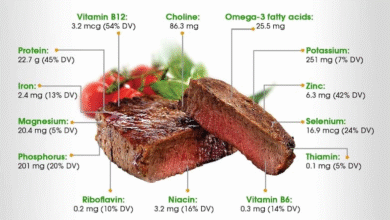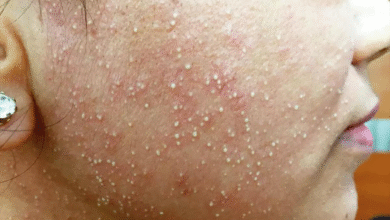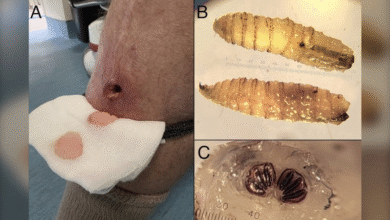Legionnaires’ Disease Outbreak in NYC: What You Need to Know

In recent weeks, a concerning outbreak of Legionnaires’ disease in NYC has captured public attention, affecting dozens of residents primarily in Central Harlem. Health officials have confirmed that a total of 58 individuals have been diagnosed with this severe form of pneumonia, caused by the Legionella bacteria, with two tragic fatalities reported. Symptoms of Legionnaires’ disease, including cough, fever, and respiratory distress, have prompted health alerts urging residents in impacted zip codes to seek medical attention if they experience flu-like feelings. As the NYC Health Department takes steps towards remediating contaminated cooling towers, the situation underscores the importance of recognizing Legionnaires’ disease symptoms and understanding the potential dangers of this health outbreak. Effective treatments are available, but early detection is crucial in preventing serious complications from this bacterial infection.
The recent NYC health outbreak has brought to light a significant concern regarding a bacterial pneumonia known as Legionnaires’ disease. This illness is triggered by exposure to the Legionella bacteria, commonly found in natural water sources but also within man-made water systems, like cooling towers and faucet fixtures. Individuals who inhale contaminated droplets may develop symptoms resembling flu, including high fever and muscle pains. Addressing this issue involves a community effort in preventing Legionnaires’ disease by ensuring safe water management practices. Fortunately, with prompt and appropriate treatment, affected patients can recover, highlighting the importance of awareness and timely intervention.
Understanding Legionnaires’ Disease Symptoms
Legionnaires’ disease is a severe form of pneumonia caused by the Legionella bacteria, and its symptoms can mimic those of flu or other respiratory infections. Common symptoms include a persistent cough, chills, muscle aches, fever, difficulty breathing, and other signs like nausea and diarrhea. These symptoms usually present themselves between two to 14 days after exposure to the bacteria, which often thrive in warm water environments. Recognizing the symptoms early can significantly impact the effectiveness of treatment and overall prognosis.
High-risk individuals such as those aged over 50, smokers, and persons with chronic lung conditions need to be especially vigilant. Symptoms can worsen quickly, potentially leading to severe respiratory complications. Immediate medical attention is crucial for these groups, as the condition can escalate from mild to severe within days. Public health alerts encourage anyone in affected areas, especially those experiencing flu-like symptoms, to seek healthcare promptly to initiate potential testing and treatment.
The Legionnaires’ Disease Outbreak in NYC
Recent reports indicate a distressing outbreak of Legionnaires’ disease in New York City, where at least 58 individuals have been diagnosed, resulting in two fatalities. The Central Harlem area, along with neighboring zip codes, is currently under heightened scrutiny due to the rise in cases linked to local water systems. Health officials are taking proactive measures, including the remediation of cooling towers that tested positive for Legionella, which is vital in curbing further spread of the disease.
As the NYC Health Department continues to monitor the outbreak, public health officials emphasize the need for community awareness regarding this potentially deadly illness. Residents are urged to familiarize themselves with the symptoms and understand the necessary steps for seeking care. Given the nature of Legionnaires’ disease transmission, which primarily involves inhalation or ingestion of contaminated water droplets, reassurance and education are key elements in preventing more cases from emerging.
Causes and Transmission of Legionnaires’ Disease
Legionnaires’ disease is caused by exposure to the Legionella bacteria, which thrive in warm, moist environments, such as cooling towers, plumbing systems, and hot tubs. Understanding how this bacterium spreads is essential for preventing future outbreaks. Unlike many infectious diseases, Legionnaires’ is not spread from person to person; rather, it is contracted when individuals inhale contaminated water droplets or aspirate water mist containing Legionella.
The CDC outlines various environmental factors that facilitate the growth of Legionella, underscoring the need for rigorous water management practices in residential and commercial buildings. Testing and maintaining water systems are crucial to mitigate risk, especially in places frequented by vulnerable populations like the elderly or immunocompromised individuals. Community awareness initiatives should focus on informing residents about maintaining their water systems to prevent waterborne diseases.
Legionnaires’ Disease Treatment and Management
Effective treatment for Legionnaires’ disease hinges on early diagnosis and prompt antibiotic intervention. Commonly prescribed antibiotics include Levofloxacin and Azithromycin, both of which target the Legionella bacteria effectively. The recovery rate is high for most patients if treated promptly; however, delays in seeking care can lead to severe complications, including respiratory failure or death, particularly among high-risk populations.
Healthcare professionals stress the importance of early intervention and establishing a clear diagnosis through methods like chest X-rays and urine tests. Patients exhibiting severe symptoms may require hospitalization for monitoring and treatment. Therefore, if someone suspects they are experiencing symptoms related to Legionnaires’ disease, immediate consultation with a healthcare provider is encouraged to minimize any potential risks.
Preventing Legionnaires’ Disease: Key Strategies
Preventing Legionnaires’ disease requires a concerted effort to control the environment in which Legionella bacteria thrive. This includes implementing comprehensive water management programs within buildings, especially those with cooling systems, hot tubs, and other potential exposure sites. Building owners are encouraged to conduct routine inspections and maintenance of water systems to ensure that conditions unfavorable to Legionella growth are maintained.
Additionally, public health campaigns aimed at educating vulnerable populations about the risks and symptoms of Legionnaires’ disease are essential for prevention. Emphasizing lifestyle changes, such as quitting smoking and effectively managing chronic illnesses, can further reduce the risks associated with Legionnaires’. Community collaboration, education, and vigilant maintenance of water systems are all critical components in safeguarding public health against Legionnaires’ disease.
Recognizing High-Risk Populations for Legionnaires’ Disease
Certain groups are disproportionately affected by Legionnaires’ disease, including seniors aged 50 and over, smokers, and individuals with chronic respiratory conditions. The acute nature of symptoms can lead to severe outcomes within these populations, necessitating proactive health measures. It is vital that these high-risk individuals stay informed about the symptoms of Legionnaires’ disease and seek urgent medical care at the first sign of flu-like symptoms.
Public health messaging should prioritize education targeted at these vulnerable groups, informing them about not only the disease itself but also preventative measures. Supporting chronic lung health through lifestyle changes, such as smoking cessation and regular health check-ups, is essential in reducing incidence rates. Increased awareness in high-risk populations plays a critical role in early detection and better health outcomes.
The Role of Healthcare Providers in Legionnaires’ Disease
Healthcare providers play a pivotal role in identifying and treating Legionnaires’ disease effectively. They are responsible for assessing patient histories, recognizing symptoms, and providing swift diagnoses to mitigate the disease’s progression through timely antibiotic treatment. Furthermore, healthcare professionals must remain vigilant during outbreaks, ensuring they report cases to public health authorities promptly.
Additionally, continuing education for healthcare workers about Legionnaires’ disease is crucial. This involves staying updated on the latest research regarding treatment protocols, environmental controls, and understanding the implications of outbreaks within their communities. By enhancing their knowledge and responsiveness, healthcare providers can significantly influence outcomes and reduce the impact of future outbreaks.
Water Management Practices to Mitigate Risk
Proper water management practices are integral in preventing the spread of Legionnaires’ disease. Building owners and managers are encouraged to adopt comprehensive strategies that include regular maintenance and monitoring of water systems. This involves controlling water temperatures, maintaining adequate chlorine levels, and ensuring that systems are regularly flushed to prevent stagnation—factors that foster Legionella growth.
In addition to these practices, establishing standard operating procedures for cleaning and inspecting cooling towers and water features is necessary for compliance with health guidelines. Collaboration among building managers, health authorities, and maintenance teams can ensure that preventative measures are consistently applied. These initiatives not only protect residents but also enhance public health outcomes within communities at risk.
Community Awareness and Education on Legionnaires’ Disease
Community engagement and education are key components in combating the threat of Legionnaires’ disease. Local health departments should lead initiatives to inform residents, particularly those in affected areas, about the symptoms and risks associated with Legionnaires’ disease. Public forums, informational brochures, and social media campaigns can serve as effective tools to reach broader audiences, fostering a culture of vigilance.
Moreover, partnerships with community organizations can further enhance outreach efforts. Providing accessible resources regarding preventive measures, recognizing symptoms, and responding effectively to health alerts can empower residents to take charge of their health. Promoting an informed community not only helps individuals but can reduce the overall burden of Legionnaires’ disease in public health.
Frequently Asked Questions
What are the symptoms of Legionnaires’ disease related to the NYC outbreak?
During the recent Legionnaires’ disease outbreak in NYC, common symptoms include flu-like signs such as cough, chills, muscle aches, fever, and difficulty breathing. Some patients may also experience nausea, diarrhea, and confusion. Symptoms typically appear between two and 14 days after exposure to the Legionella bacteria.
How is Legionnaires’ disease diagnosed and treated in NYC?
Legionnaires’ disease diagnosis, especially during the NYC outbreak, is performed using chest X-rays, urine tests, and lab analyses of sputum samples. Effective treatment generally involves antibiotics such as Levofloxacin and Azithromycin. Early diagnosis is crucial for effective recovery from Legionnaires’ disease.
What precautions can be taken to prevent Legionnaires’ disease in NYC?
To prevent Legionnaires’ disease during the NYC health outbreak, building owners and managers should implement robust water management programs to control Legionella bacteria growth. Individuals, especially those at higher risk, should avoid exposure to potential sources like hot tubs and poorly maintained water systems.
What should residents in NYC do if they experience symptoms of Legionnaires’ disease?
Residents in NYC, particularly in Central Harlem and nearby zip codes affected by the Legionnaires’ disease outbreak, should seek medical care immediately if they experience flu-like symptoms. The NYC Health Department recommends contacting a healthcare provider as soon as possible for assessment and potential testing.
Who is at higher risk for Legionnaires’ disease during the NYC outbreak?
Individuals at higher risk for Legionnaires’ disease, particularly during the outbreak in NYC, include adults aged 50 and older, smokers, people with chronic lung conditions, and those who are immunocompromised. These groups should be particularly vigilant about monitoring symptoms.
Is there a vaccine for Legionnaires’ disease related to the NYC outbreak?
Currently, there is no vaccine available for Legionnaires’ disease, including during the NYC outbreak. The best prevention is minimizing the growth and spread of Legionella bacteria through proper maintenance of water systems and regular monitoring.
What actions are being taken in NYC to address the Legionnaires’ disease outbreak?
In response to the Legionnaires’ disease outbreak in NYC, health officials are directing the remediation of 11 cooling towers that tested positive for the Legionella bacteria, enhancing public health oversight, and urging residents to report flu-like symptoms quickly.
How can I protect myself from Legionnaires’ disease during the outbreak in NYC?
To protect yourself from Legionnaires’ disease during the outbreak in NYC, avoid potential sources of exposure like untreated water features. If you are at higher risk, it is crucial to monitor any flu-like symptoms and seek medical advice promptly.
What should building managers in NYC do to prevent Legionnaires’ disease?
Building managers in NYC should develop and implement a comprehensive water management program to control the growth of Legionella bacteria, which can cause Legionnaires’ disease. This includes regular maintenance of cooling towers, hot tubs, and plumbing systems.
What are the implications of the NYC Legionnaires’ disease outbreak?
The NYC Legionnaires’ disease outbreak highlights the need for public health awareness and the importance of monitoring water sources for Legionella bacteria. It underscores the necessity of rapid diagnosis and treatment to prevent severe complications associated with the illness.
| Key Point | Description |
|---|---|
| Outbreak Summary | 58 cases of Legionnaires’ disease reported in NYC, primarily in Central Harlem. |
| Health Risks | Two fatalities confirmed; those with chronic illnesses and older adults are at heightened risk. |
| Symptoms | Flu-like symptoms include cough, chills, muscle aches, fever, and in severe cases, confusion. |
| Transmission | Not transmitted from person to person; primarily contracted from contaminated water systems. |
| Diagnosis and Treatment | Diagnosed via chest X-rays and lab tests; treated with antibiotics. Early diagnosis is crucial. |
| Prevention | No vaccine available; implementation of water management programs recommended to control bacteria. |
Summary
The Legionnaires’ disease outbreak in NYC has raised significant health concerns, affecting dozens in Central Harlem and leading to two reported deaths. Health officials emphasize the importance of awareness regarding symptoms and the need for early treatment, especially for at-risk populations. Preventative measures, including effective water management, are critical to avert further infections.




